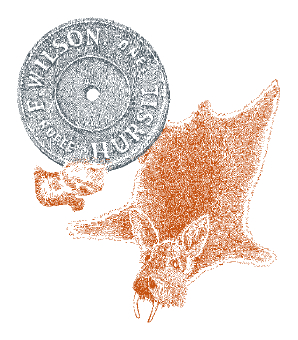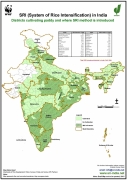/regions/india
India
Tairne wala samaj doob raha hai: An essay by Anupam Mishra on the Bihar Floods
Posted on 18 Jun, 2010 09:55 PMSmall and big dams and big embankments were constructed in this region, without understanding the nature of the rivers which have always changed course or overshot their banks. Assuming however, that the river will not change course, the Government adopted a skewed development program - that of building embankments to contain the river.

Need to bring focus of water & agriculture policies onto rainfed farming : SANDRP May '10
Posted on 18 Jun, 2010 11:03 AM![]()
The Dams, Rivers and People issue for Apr-May 2010 is out. The state government policies, programmes and practices in water resources and highlights the need to bring focus of water & agriculture policies onto rainfed Farming. It is likely to yeild better economic, hydrologic, sustainable, equitable and climate friendly results and foodgrains production as per our future demands.
Ek Phirangi Raja - Chutki Bhar Namak Paseri Bhar Anyay: The story of Frederick Wilson and the Great Indian Hedge
Posted on 18 Jun, 2010 12:33 AM Ek Phirangi Raja
Ek Phirangi Raja
In this essay, Romesh Bedi recounts the true story of Frederick E Wilson, a British army officer, who deserted the army after the Sepoy Mutiny of 1957, escaped to the Himalayas, and settled in Harsil, a remote village in Uttarakhand on the banks of the Bhagirathi.
Wilson makes a flourishing business from the export of skins, fur, musk from the region, and rips the local deodar forest, to cash in the growing demand for wooden sleepers during the expansion of the Indian railways by the British, which were sent down to the plains through the rivers. Wilson soon acquires a lease from the Raja of Tehri-Garhwal, for his timber business and keeps the Raja happy by giving him a share of the profits, and even begins to mint his own local currency, because of which locals start calling him Raja.
Neel Ka Dhabba - Sansthayen Narayan Parayan Bane: Essays in Hindi by Mahatma Gandhi and Vinobha Bhave
Posted on 17 Jun, 2010 01:05 AMNeel Ka Dhabba recounts how Gandhiji washed away the stain of cruel oppression of Champaran's Indigo farmers forcibly made to grow Indigo by processors-traders, using caution, non-violence, courage and humility. The essay is narrated by Gandhiji himself.
In Sansthayen Narayan Parayan Bane, Acharya Vinoba takes a critical look at the work of voluntary development organisations, and details what and how their goals, functioning and funds management should be.

Climate policy watch
Posted on 16 Jun, 2010 11:57 PMClimate change has been denied, labelled as a myth and a political manoeuvre or synergised with individual weather events.
Historical maps of Indian towns and cities (1893, 1909, 1924)
Posted on 15 Jun, 2010 11:11 PMThis set of maps of Indian towns and cities, dated between 1893 and 1924, give an idea of historical water bodies in each town/city, and can be compared with present day maps, to discover water bodies, that may have been lost to urban encroachments or other human interventions.
System of Rice Intensification and Paddy Cultivation - Maps developed by the WWF-ICRISAT Project
Posted on 14 Jun, 2010 06:23 PM Paddy, one the country's staple crops is cultivated all over the country, barring parts of Jammu and Kashmir, Gujarat and Rajasthan. This set of interesting maps about Paddy and System of Rice Intensification (SRI) from the SRI India website, maintained by the WWF-ICRISAT Project (a joint initiative of WWF and ICRISAT), give a bird's eye view of the districts under Paddy and SRI Paddy cultivation, and the Paddy productivity in various districts of the country.
Paddy, one the country's staple crops is cultivated all over the country, barring parts of Jammu and Kashmir, Gujarat and Rajasthan. This set of interesting maps about Paddy and System of Rice Intensification (SRI) from the SRI India website, maintained by the WWF-ICRISAT Project (a joint initiative of WWF and ICRISAT), give a bird's eye view of the districts under Paddy and SRI Paddy cultivation, and the Paddy productivity in various districts of the country.
Districts with Paddy cultivation and where SRI approach has been introduced: Of the total 604 districts in India, paddy is cultivated in 564 districts. Of these, in 246 districts, SRI paddy cultivation approach has been introduced (data as of 2010). The spread of SRI has been most widespread in Uttarakhand, Eastern Madhya Pradesh, Orissa, Jharkhand, West Bengal, Andhra Pradesh, Tamil Nadu and Karnataka, as 50-95% of the districts in these regions/states have presence of SRI.
Rain water harvesting or drain water harvesting - A serious approach to water conservation needed
Posted on 12 Jun, 2010 08:41 PMIF CONSERVATION OF WATER SOURCES, RECYCLE, REUSE IS SERIOUSLY NOT ADOPTED NOW THE TIME IS NOT FAR WHEN WE MAY NEED TO "DRAIN HARVEST" WASTEWATER FOR ALL KINDS OF CONSUMPTIONS.
Millions of people worldwide are opposed to plastic bottled water - An alternative solution is here
Posted on 11 Jun, 2010 07:51 PMThe momentum for a better Global drinking Water Environment is increasing.
One way to achieve this Mission is to reduce the global High energy wasteful costs in producing Plastic Bottles, then transporting these products (so-called mineral,spring, volcanic Water) daily to Supermarkets, Newsagents & Corner stores.
Chasing a mirage: Water harvesting and artificial recharge in naturally water-scarce regions - An EPW paper
Posted on 11 Jun, 2010 12:39 PMThis paper refers to the recent plans by the Government of India to undertake artificial recharge of groundwater in over-exploited areas of the country to meet the demands for water and raises certain fundamental questions about the methods used for analysing the hydrological and economic impacts of the interventions.